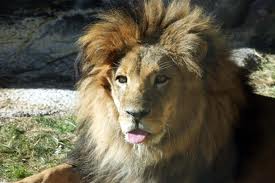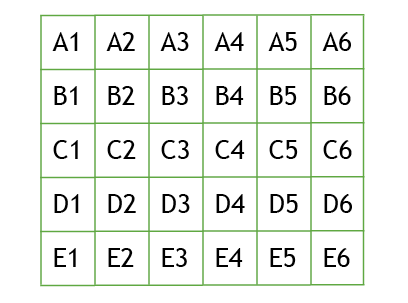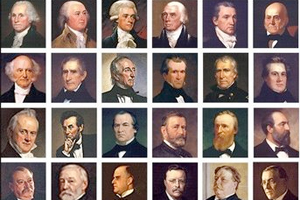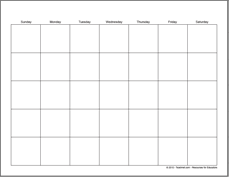By Lee Shiney
As a professional artist (see the footnote below), one way I have chosen to share my artwork is with DIY projects. Because much of my work is made using turntables, I wanted to find a way to make turntables from readily-available components. This result is the first of my projects to be accepted by Wichita, Kansas-based Arts Partners for inclusion in their classroom-based programs. Its not intended to be a lesson plan, but rather, is an attempt to show what the possibilities are for fun art projects that dont cost an arm and a leg.
While looking for an inexpensive way to make turntables for classroom use, I stumbled onto using two plastic cups, one inside the other. The two key components to making this work are dead simple (1) I insert a shim between the two, preferably plastic, that is thick enough to allow one cup to spin on top of the other when they are upside down. (2) The bottom of the cup needs to be slightly concave. With enough of a rounding of the bottom of the cup, it makes the cup spin on a very small point, thus reducing friction. The penny glued to the center of the plastic gives the cup a more durable point to spin on. With cups facing downward, some extra stability is gained. From there, all that is needed to finish a turntable is to glue, or even tape, a piece of cardboard onto the top cup.
 Thats the building part. Making the art is simply a coordinated process of turning the cardboard by hand, while zig-zagging a marker back and forth. Dont try to make wavy lines. The moving turntable will do the work for you. A simple straight-line stroke is all that is needed. Practice.
Thats the building part. Making the art is simply a coordinated process of turning the cardboard by hand, while zig-zagging a marker back and forth. Dont try to make wavy lines. The moving turntable will do the work for you. A simple straight-line stroke is all that is needed. Practice.
This homemade turntable can give children a great opportunity to make their own spin art using markers or paint. Through experimentation, they can learn about concentric circles, spirals, and the Spirograph-type flower petal motifs that come with experimentation and skill. Think of various household tools or toys that have motors that could be put into use in motorizing the turntable; one example is to chuck a pencil (with eraser) into an electric drill. Another would be to use a motorized car, held under the table. Improvise and explore.
Lee and Lajean Shiney are the original creators and publishers of Teachnet.com. Following successful cancer treatment in 2001, Lee Shiney made a career change and became a full-time working artist. He blogs at www.artfactory.org, his complete portfolio is at www.leeshiney.com, and he has small, inexpensive work available in his Etsy store.
A while back, as I was thinking about the fluctuation of income associated with being a full-time fine artist, I determined that if I wasnt selling much artwork at any given moment, I should try giving something away. This took the form of sharing my talents (mostly in the classroom through Arts Partners), and sharing my artwork by making small pieces that were inexpensive enough that my friends could actually afford to buy them. An offshoot from this was setting up an Etsy shop. Buying some of the small works there really does help fund me as an artist, and you receive original hand-made art, not cheap prints. You really should check them out. They make great Valentines Day presents for your secret buddy at school. Just say no to the traditional hearts-on-a-mug!
Daves' Sled Kite, free step-by-step instructions from Hi Fly Kites
March is also the time to start thinking about kites, and youre probably thinking theyre something youd like to make, but dont know how. In addition to seeing the sites below, remember that kite clubs abound, and that a big business has popped up for high-performance, fairly pricey stunt kites. These clubs or businesses may be willing to put on a demonstration for your school or class.
* Hi Fly Kites website offers free, well-documented tutorials that help you craft two different kites: Adams Paper Fold Kite and Daves Sled Kite.
* The classic Paper Bag Kite is a simple process that uses little more than a paper lunch sack and crepe paper streamers.
* Tetrahedral Kite Using Straws is more challenging to make than the other two examples. It is constructed of drinking straws, lightweight multi-filament nylon, hat elastic and shopping bags. (Note from Lee: After seeing examples of this kite constructed by Alexander Graham Bell, as a high school student I built tetrahedral kites using drinking straws, string, and actually stapled newspaper around the straws to cover it. My version was heavy to say the least, but flew very well in strong Kansas winds, and also was a good learning experience about the integrity of the triangle.)
 Incorporate a weather activity into your March lessons to test the famous March saying. Brainstorm with students what aspects of weather determine its ferocity or calmness.
Incorporate a weather activity into your March lessons to test the famous March saying. Brainstorm with students what aspects of weather determine its ferocity or calmness.
After listing things like temperature extremes and precipitation types and wind speeds, draw a calendar grid on the chalkboard or large sheet of paper, then each day, make notes regarding the weather variables. Review from week to week, then do a final observation at the end of the month.
Students can make graphs, vote each day a lion day or lamb day (using stickers or coloring with markers), write a short story about March including weather elements, have a meteorologist visit the classroom, or correspond with other classrooms via the internet to compare weather information with them. Save your calendar for next year, and you can make comparisons from year to year.
Weather Resources:
- You might visit The Weather Dude to stock up on his books and CDs, but his website is also fantastic all by itself. Learn all about different weather conditions and seasons.
- NOAA National Oceanic & Atmospheric Administration has sections devoted to kids and teachers. Their Cool Sites for Everyone includes links to past weather. In case you didnt track your areas weather activity last March, they did.
- Tracking March weather may open the door to some research on global climate change, too.

The first of April is the day we remember what we are the other 364 days of the year.
- Mark Twain
How do you trick your students? We want to know! One T2T contributor tells us that she prints the morning lesson backwards so her students have to turn it over and hold it up to the light to read it!
Mix up the entire faculty: pick a job for the day from a hat; the principal could end up as a janitor or librarian!
April Fools Resources & Links:
FlipText generates upside-down typed text. Use FlipText on a handout or test, or even on Facebook.
I teach 7th grade science and one year on April Fools Eve, America Online (my ISP at the time) posted headlines announcing that the recent Jupiter probe had discovered life forms in the atmosphere of this planet. They included .wav files of the recorded sounds. It was very convincing! (I was sucked in and left to ponder the implications of the discovery of life in our solar system). The next morning when I logged on for an update, the prank was revealed. Nevertheless, I printed out transparencies of the article and captured my classes attention the next day with this startling announcement at the beginning of each period. The remarks were spontaneous and awed. At the end of the period, when I revealed the truth some kids were not surprised; others, like me were left dumbfounded by the switch- and enlightened by the course of their own thoughts. It was the best April Fools trick ever! This year I may spend time with optical illusions or science magic. Sort of tricks for your eyes. Unless one of you have a great alternative prank! -Carol in CO
I knew I had this somewhere its not the original which gave instructions such as stand up, turn around twice, clap your hands, etc. I made some changes to keep things quieterhave fun! -j diamond
DIRECTIONS:
This is a timed test. You will be allowed only two minutes to complete it, therefore you must work quickly. Record your responses on this sheet of paper.
1. Read everything before you do anything.
2. Print your name in the upper right corner of your paper.
3. Draw two squares in the lower left corner.
4. Place an x in one square and an o in the other.
5. Write your grade level in the lower right corner.
6. Print todays date under your name.
7. Draw three circles in the upper left corner of your paper.
8. Divide each circle in half by drawing a line through the center horizontally.
9. Sign your name in the lower right corner.
10. Draw a circle around your signature.
11. Write your birthday under your signature.
12. Now that you have finished reading everything, do only as directed in the first sentence.
Will you see the Loof Lirpa Bird?
Every year I write a homework sheet telling the children that the Loof bird returns to our town around this time. I write that they have to follow the directions to see the Loof Lirpa bird, because its a very careful bird. They have to go outside and stand on the steps (veranda, patio, deck, whatever). There they have to look to the sky and call Loof Loopa! Loof Lirpa! Loof Lirpa! and he will appear. If he doesnt, you go back inside, look into the mirror and do the same thing. This time, for sure, youll see Loof Lirpa. Then, you are to draw a picture of Loof Lirpa. It is surprising how many I do fool. Sound too cruel? We have a good laugh next day. Many children draw me as Loof Lirpa. By the way, Im sure by this time youve noticed that Loof Lirpa is April Fool spelled backwards.
-Robert Clarke, Grade 4, Persalvic School in Victoria, Newfoundland, Canada.
Do you have a great trick that youve used with your students, or have they found a way to trick you? Share your April Fool story today, and stop by the next time April 1st rolls around for a list of accessible classroom jokes and pranks. Leave a comment below!

Whether you are a 20-year veteran or just starting out, a portfolio should be a key component of your teaching tools. Portfolios are a nearly universal requirement for the hiring process, but if you already have a secure job you should view a portfolio as your insurance against unforseen district shake-ups. Keeping one of these self-promotion tools up-to-date also can be a good exercise in self-evaluation.
Think of a teaching portfolio as an expanded resume. A few personnel administrators will welcome a variety of formats, such as a box of notes, clippings, photos and objects. However the majority look for a standard 3-ring binder. Inside they will expect to find things that show a teachers strengths, goals and achievements. This variety of items could include a resume, references, letters of recommendations, transcripts, education philosophy, classroom management theory, examples of lessons and photos of your classroom in action. Its not a scrapbook, but a representation of your teaching abilities.
* Buy The Book: An obvious first step is to purchase a three-ring binder now to keep on a shelf in your room. The visual reminder might be enough to encourage you to save information for it.
* Be A Smart Curator: Figure out how you are going to save information and move it into your portfolio. One way would be to keep a large enough box in your room to archive things from your classroom for up to a year at a time. At least once per year, sort through your archive box and move items over to a portfolio box or file. Some items might be obvious enough to go straight into the portfolio file, such as printed results of special committee work you participated in.
* Divide And Conquer: Use tabbed dividers to organize and separate the contents of your portfolio. Identically named folders can be kept in your portfolio box or file cabinet as holding places for information. Suggestions for sections: resume and certification information; classroom planning, instruction and evaluation; personal goals and professional preparation; committee work; outside educational activities.
* Put It On The Calendar: Pencil in days on your calendar to review your portfolio and sort through your archive box.
Elements of a Good Portfolio
Use this list as a starting point for ideas for information and items to include in your portfolio:
* Table of contents
* Resume, including continuing education, special committee work and awards and special recognition
* References
* Letters of recommendation
* Transcripts
* Educational philosophy
* Classroom management theory
* Personal goals
* Sample worksheets, games and tests
* Examples of lessons units or projects
* Photos of your classroom in action to illustrate your lesson examples
* Examples of students work
* Final results of projects or committees you have been a part of
* Optional: short video showing you in action in front of the classroom and one-on-one with students
* Optional: screen shots and addresses of school or classroom websites you have created
* Optional: computer disks and print-outs of programs you have written or modified
Tips
* Keep It Simple: Dont overload your portfolio with page after page of lengthy text or repetitive photos. Imagine viewing a friends home videowould you rather see two hours of jerky graduation footage or five minutes of highlights?
* Keep It Manageable: Three-ring binders are the preferred choice for portfolios.
* Be Timely: Review your portfolio at least twice a year. During winter and summer vacations you can use some of the breathing room to pause and reflect not only on your portfolio, but your teaching in general. Also pencil in changes to your resume at this time so that when needed, an updated version can be retype without having to round up the latest information.
* Say Cheese: Keep a cheap camera with fast film, flash and batteries at your desk to use on a moments notice. Using a camera regularly will get your students used to being photographed in the classroom.
* Make Copies: Where possible, use copies of originals in your portfolio, keeping the originals in a safe place. To add a professional touch to photos, tape them to a sheet next to captions printed from a computer. Run a color copy of the whole finished sheet to use in the portfolio, and take the originals back off the taped-up master.
* Make It Clear: Create a custom cover for your portfolio with a three-ring binder with a clear insert on the cover. Use clear plastic page holders inside to keep your pages clean and neat.
* Keep It Legible: Use a computer to type and print out easy-to-read information sheets or a table of contents. Use 12 point type where possible for easy readability.
 Ian McCall has designed two wonderful exercises that are great practice for younger children and fun for kids of all ages. We were quite taken with his Clover Patch Search game, where you browse among square photos to find the clovers, and maybe even a four-leaf clover!
Ian McCall has designed two wonderful exercises that are great practice for younger children and fun for kids of all ages. We were quite taken with his Clover Patch Search game, where you browse among square photos to find the clovers, and maybe even a four-leaf clover!
You can offer this as a Take 5 activity, a fun reward for a job well done and some free time to spare. If you have a Smart Board or projector, have a little competition to see who can find clovers the fastest. Consider assigning names to each of the grid spaces so students can call out the location of a find. Heres one way to do so:
- Visit the Clover Search game by clicking here.
- Resize your browser window to create even rows and columns of clovers. Setting the game for 24 clovers means you can have 6×5 columns, or 5×6, 8×3, or even 16×2. Have your students choose, and ask them if a particular configuration is easier for them when clover hunting.
- Name the columns in order: A, B, C, D, E
- Name the rows in order: 1, 2, 3, 4, 5
- Put the game up on a display so the whole class can see. The second column, third row down would be B3 and so on, making easy for students to specify a location.

The main page for the site also includes links to searching tips and a fun geotagging map where people have tagged clovers they found. Finally, Mr. McCall also has a beautiful matching game that uses some very clover-esque aerial photos of Kansas crops, Random Kansas Farm Generator. Find the match for the featured photo among several similar photos. Its another great game to play solo or with a group.
Play the Random Kansas Farm Generator matching game here.
Play the Clover Patch search game here.
 When students are given the gift of a three-day weekend, its always fun to make sure they know why theyre getting that extra day off. Surprise your students with a pop quiz, and a reminder of the great service each of our presidents provided for our country.
When students are given the gift of a three-day weekend, its always fun to make sure they know why theyre getting that extra day off. Surprise your students with a pop quiz, and a reminder of the great service each of our presidents provided for our country.
Pick and choose from the questions below, or download our free quiz. This Microsoft Word file is editable and contains two pages. The first page can be used for lower grades, and second page can be used alone or with the first for upper grades. Edit to suit your needs and grade level.
Click here to download your free Presidents Day Pop Quiz.
What is the full name of our current president?
How many Presidents have we had in the history of the United States?
Presidents Day is observed each year on the third Monday in what month?
What is the name of the Presidents house?
When we place votes to choose a new president, we hold an ___________.
What is the name of the ceremony that takes place when a new president is sworn into office?
The President is also called the Commander in _________.
Name one of the presidents whose birthday is also this month.
Was our first president elected or appointed?
When a president chooses not to sign a new bill into law, he returns the unsigned bill to the Congress. This special Presidential action is a called a ______.
What is the name of the Presidents office in the White House?Name two first ladies.
What was the nickname of a president, and how did he get that nickname?
In what month are presidential elections held?
Name a president who died in office.
Name a Vice President who went on to become President.
Give the name of a Presidential pet, and which president that pet belonged to.
Why is there no school on Presidents Day?
Additional Resources for Presidents Day topics:
 Find all of our Valentines Day crafts, activities, and lesson ideas in one place. Just click here for a complete listing.
Find all of our Valentines Day crafts, activities, and lesson ideas in one place. Just click here for a complete listing.
The video above, created by a US History student, showcases many excellent photos of Dr. Martin Luther King and includes voice over of Kings We shall overcome speech. Before heading out for the three day weekend, be sure your students know why Monday is observed as a national holiday.
The full version of Kings I have a dream speech is, of course, available on YouTube and is 17 minutes and 28 seconds long.
Stanford.edu King Institute Projects One of the best, most comprehensive MLK resources available. (If viewing in January, be patient as page loads may take longer.)
 Our New Years gift to you is this ultra-simple calendar template. Choose from a 5-row or 6-row version. Just click, save, and print. Fill in the numbers and month using your hippest pack of markers or colored pencils.
Our New Years gift to you is this ultra-simple calendar template. Choose from a 5-row or 6-row version. Just click, save, and print. Fill in the numbers and month using your hippest pack of markers or colored pencils.
Print one and then enlarge or reduce it on the copier to the size you need, whether its for your classroom wall or for a small binder.
There, you just saved 10 bucks or at least the hassles of crowds and lines at the 50% off post-holiday sales.
Click here to download the free 5-row calendar grid template.
Click here to download the free 6-row calendar grid template.
ConversionConversion EmoticonEmoticon